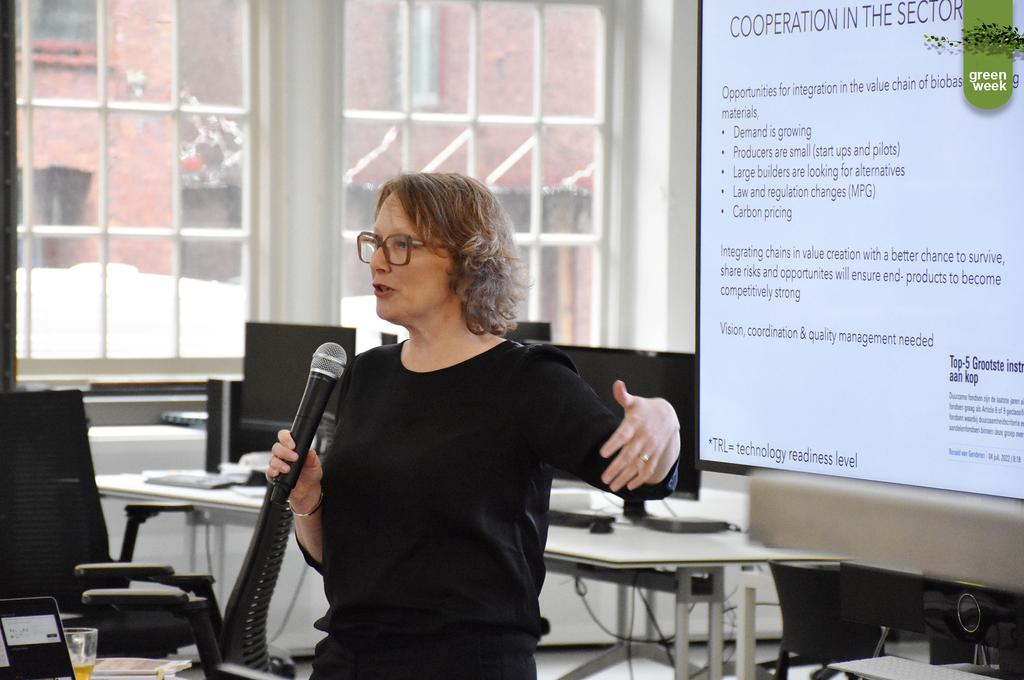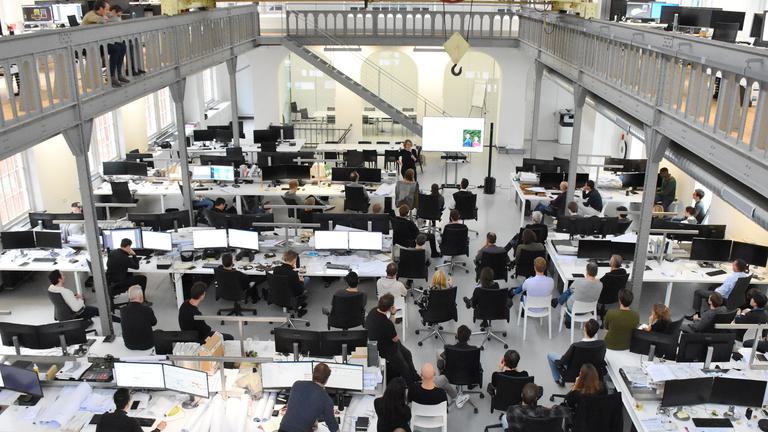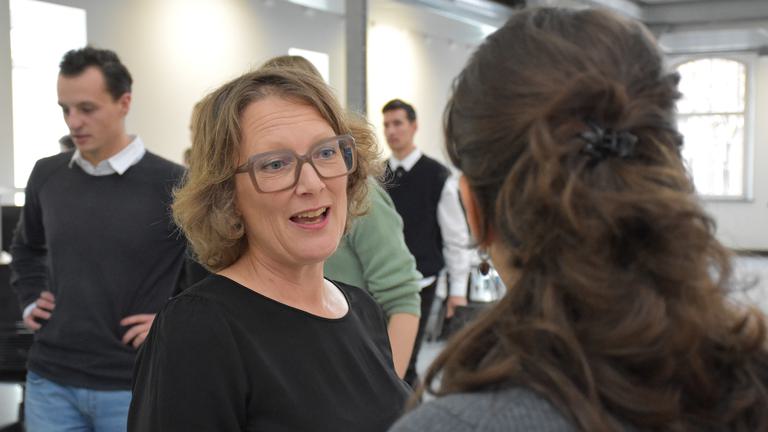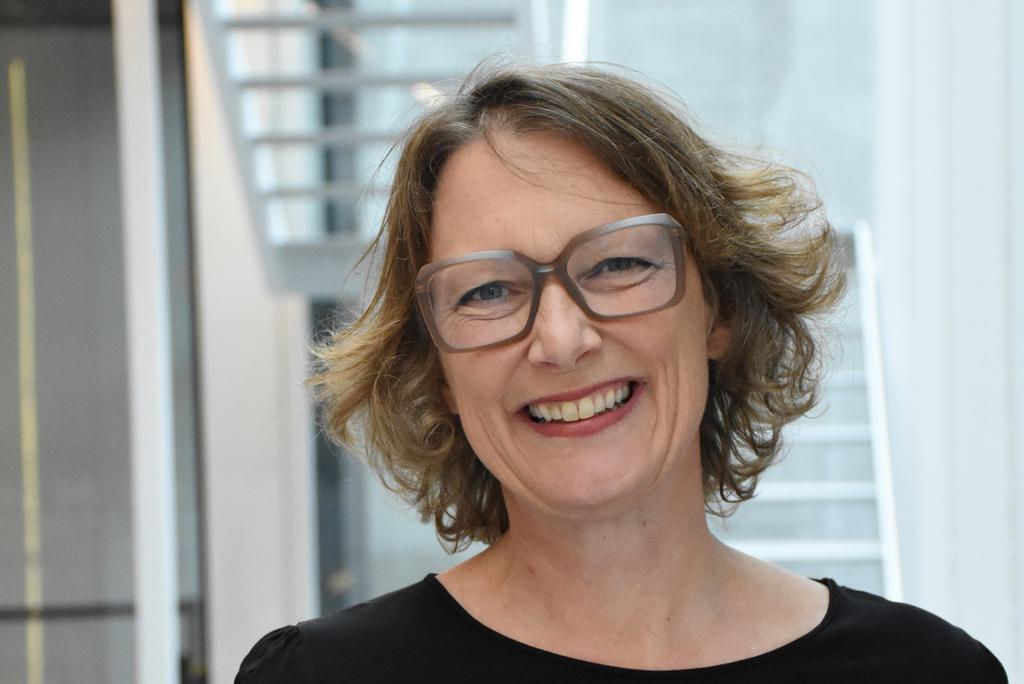For cepezed's Green Week, ‘transition manager’ Chantal van Schaik, one of the two directors of HollandHoutland, dropped by today. She gave a lecture on the need to switch to bio-based materials.
In her presentation, Chantal mentioned two important developments that could drastically change the construction industry in the coming period. First, all the new bio-based building materials that have recently been developed. At the Floriade this summer, examples were on display of building materials made from peppers, seaweed and the good old straw, among others. She foresees that within a few years it will be possible to build all new offices and houses with bio-based materials. Another important development is the growing demand for residential housing, which, in view of CO2 emissions, Chantal believes cannot be solved other than within cities and with bio-based materials. Prior to her arrival, we submitted her three questions.
cepezed: ‘Architects contribute to sustainability and a circular economy in various ways. What do you think they can do best to make architecture truly sustainable?’
Chantal: ‘I assess the climate impact of building materials and am not an expert on building technology. But it doesn't make sense to me that we put a lot of effort in reducing energy consumption for the end user, while not considering the sustainability of building materials, i.e. raw materials. If you consider a lifespan of 60 years and compare it to the period a building is used, the construction and renovation phase causes the largest share (62%) of CO2 emissions. HollandHoutland insists on choosing the right materials. Timber grows slowly, over thirty, forty years, and stores CO2 during that period. Materials that grow faster, such as straw, flax and hemp, store more CO2 in the same period. We try to make this transparent. Working with new materials is a challenge for architects, it requires different skills and cooperation with other partners in the construction industry. There is a whole new market of suppliers, products and possibilities to be discovered.’
text continues below the photos
chantal van schaik: the carbon budget is not taken seriously



cepezed: ‘Is there much to be gained in terms of sustainability when you look at the construction process? Do you also see a role for architects here?’
Chantal: 'Truly complying with the Paris Agreement requires a complete turnaround of the building sector, a systemic change. To achieve that, innovation is needed and fundamental choices will have to be made. Because building with bio-based materials is about more than just choosing a different material. Architects are aware of this, but their clients often not yet. The growing ambition and desire to create more sustainable buildings are still considered ‘nice-to-haves’, if it fits within the budget. Architects should confront clients with the long-term environmental and social consequences. This is a challenge, but architects design the world of tomorrow. Their choices should be future-proof in all respects.’
cepezed: ‘Where do you personally stand?’
Chantal: HollandHoutland sees it as its mission to prevent further global warming. We want to make sure we comply with the Paris Agreement, i.e. no more than 1.5 degrees of warming in 2050. It frustrates me that current climate measures do not take this into account. In fact, we are being ‘reassured’ that if we continue as we are doing now, we will be well above that 1.5 degrees in 2050. With current energy measures, I predict a carbon lockdown in two or three years time. What the construction sector can do is: not build at all, opt for reuse and recycling, use as few materials as possible, and opt for bio-based materials in new buildings. I see that as an opportunity for the construction industry. Like most people, I personally find it difficult to change. It helps if there is a business opportunity. And if you can start from data, so that the exact effect of certain choices is clear. In this case, the effects are actually extremely clear. With biobased materials, we build healthier houses, we build faster and with less negative impact, and we build adaptively - we take future generations into account. That is a positive mission to focus on.
Chantal van Schaik is managing director of HollandHoutland and sustainability transition manager.

more about the cepezed Green Week:
• Green Week at cepezed
• Andy van den Dobbelsteen: think ‘beyond the building’
• Menno Rubbens: towards an intrinsically circular building sector
• Joost Jacobi: the ins and outs of ‘water circular design’
• MOR studio: architecture should leave something positive rather than use something up
→ Mail bd@cepezed.nl or call our business development team on +31 (0)15 2150000